Chimpanzee is an African ape that shares many characteristics with human beings. Chimpanzees are intelligent, playful, curious, and easy to train. Scientific evidence suggests that chimpanzees and their closest relatives, the bonobos or pygmy chimpanzees, are more closely related to humans than any other animal. Chimpanzees are also related to gorillas, orangutans, and gibbons.
Loading the player...Chimpanzee hanging in a tree
The chimpanzee lives in tropical Africa from Lake Victoria in the east to Gambia in the west. Members of this species differ enough that scientists divide them into three subspecies (kinds). They are the central chimpanzee, the eastern or long-haired chimpanzee, and the western chimpanzee.
The body of a chimpanzee.
Chimpanzees range in height from 31/4 feet (100 centimeters) to 51/2 feet (170 centimeters). An adult weighs about 65 to 130 pounds (30 to 60 kilograms). Males are larger than females.
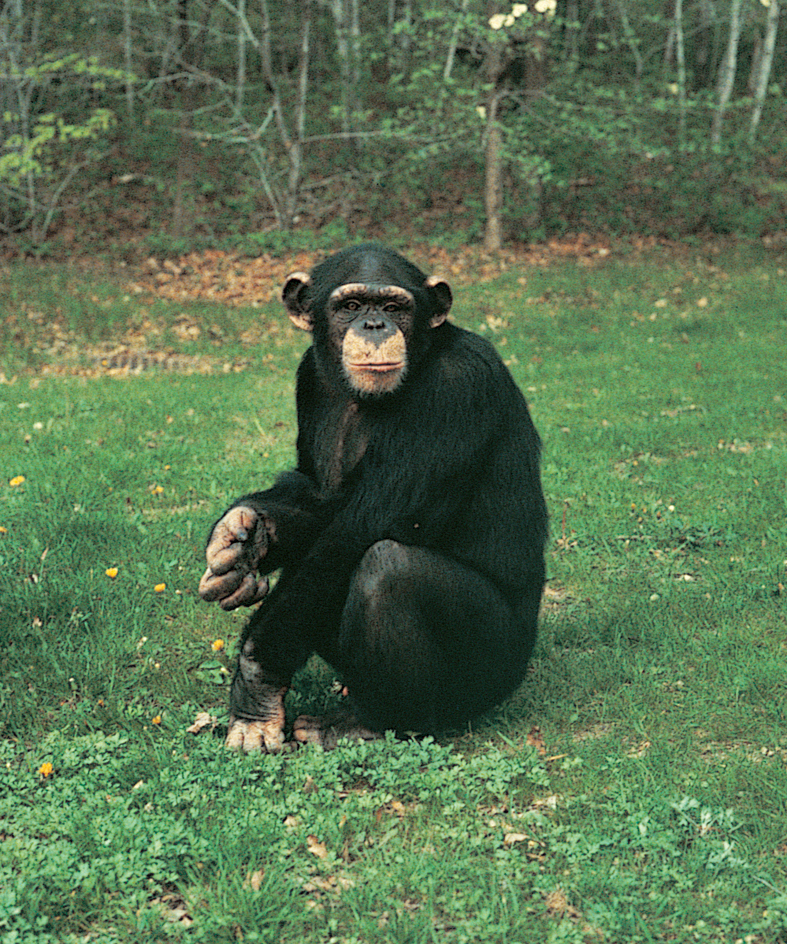
The chimpanzee’s body is covered with long, dark hair. Like other apes, the chimpanzee does not have a tail. It has large ears, and its arms are longer than its legs. The chimpanzee’s long hands are well shaped for powerful grasping and holding on to branches. In addition, the big toes of the chimpanzee face sideways and work like thumbs to help the animal climb trees.
The life of a chimpanzee.
Chimpanzees live mainly in forests. Their territories range from humid rain forests to dry grasslands with few trees. Some chimpanzees even make their homes in desertlike places. But more chimpanzees live in wet areas than in dry areas. They move about in search of food and usually range over an area of about 10 to 20 square miles (26 to 52 square kilometers). The size of their range is larger in areas with less forest cover.
Loading the player...Chimpanzee running on the ground
Scientists believe chimpanzees form loosely tied groups called communities, which share the same territory. Within communities, the apes travel in smaller groups that vary in number and change members frequently. There are three types of groups: (1) all-male bands, (2) bands of mothers and their infants, and (3) mixed bands of both sexes. The dominant male or males usually control a community’s territory.
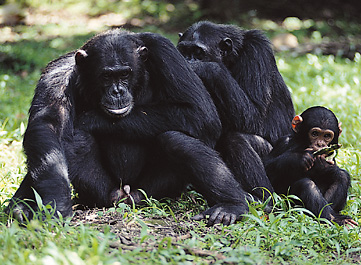
Chimpanzees live both in trees and on the ground. They spend from 50 to 75 percent of each day in the trees, depending on the forest covering and the season. They sleep in tree nests made of branches, leaves, and twigs. The animals make new nests each night. They build the nests at least 15 feet (4.6 meters) above the ground.
Like gorillas, chimpanzees travel in an unusual way called knuckle walking. The apes walk on all fours, supporting the upper part of their bodies with their knuckles. They occasionally stand upright to walk or run. Chimpanzees will walk on two legs when excited, carrying food, or looking over tall grass.
Chimpanzees’ main foods are fruits, leaves, nuts, seeds, and stems. They also eat bird’s eggs and insects, such as ants and termites. Sometimes they kill and eat baboons, bush pigs (wild hogs), monkeys, and small antelope.
Chimpanzees in the wild mate throughout the year. Most females bear their first young at the age of 11 or 12 years. The pregnancy lasts about 230 days. Female chimpanzees generally give birth to a single baby once every three or four years.
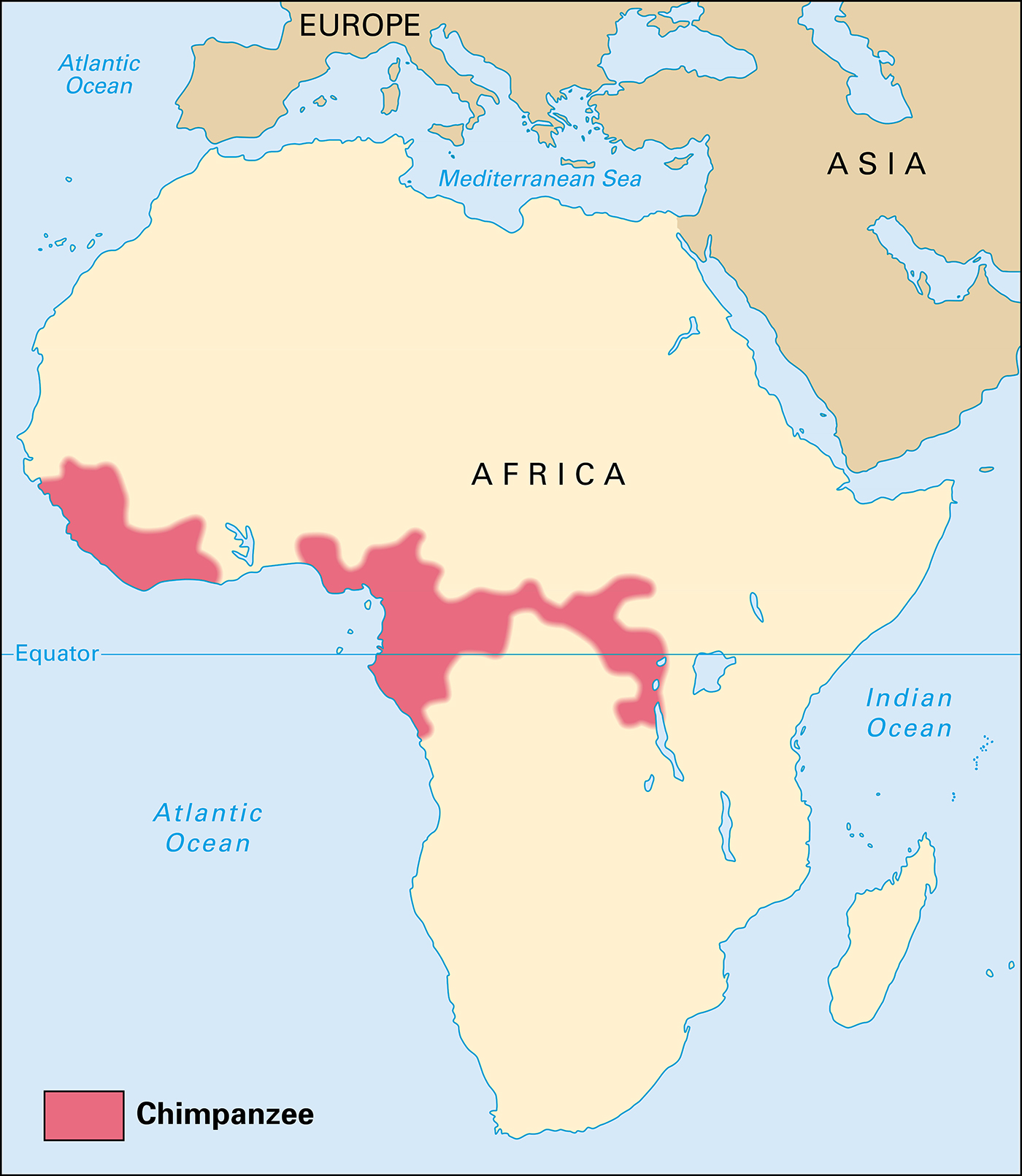
The females raise their young by themselves. The infants ride under the mother’s body, supported by her arm, until they are about 5 months old. Then they ride on the mother’s back. Chimpanzees leave their mothers at about 6 years of age.
Adult chimpanzees spend about an hour each day in a friendly, social activity called grooming. During this time, two or more of them sit and pick through each other’s hair. They remove dirt, insects, leaves, and burs from each other. Chimps occasionally fight among themselves, usually to establish their rank within the social group. They are also aggressive toward chimpanzees from other territories and will sometimes kill them.
Chimpanzees communicate by barks, grunts, and screams. When they find a large food supply, the apes jump through the trees, hoot loudly, and beat on tree trunks. The activity alerts all other chimpanzees within hearing distance. They also communicate with body postures, facial expressions, and hand gestures. Chimpanzees greet each other by embracing or by touching various parts of the other’s body. Their facial expressions cover many emotions, including excitement, fear, and rage. Sometimes the males make an aggressive show of strength by walking upright, making their hair stand up, waving branches, and screaming.
Loading the player...Chimpanzee
Chimpanzees make and use simple tools more than any other creatures except human beings. For example, they strip the leaves from stems and use the stems as tools to catch termites. They also use leaves to make “sponges” for soaking up water to drink. Some chimps employ stones as “hammers” to crack open nuts. 
Biologists believe chimpanzees live from 30 to 45 years in their normal surroundings. Chimpanzees are hunted mainly by leopards and large eagles, which prey on young animals. Wild chimpanzees also die from accidents, such as falling from trees, and they often succumb to various diseases.
Human beings rank as the greatest threat to wild chimpanzees. In some areas, people hunt the apes for food or capture them as household pets. People also have destroyed many of the forests where the animals once lived to obtain wood and create farmland.
Concern about shrinking chimpanzee populations led to a restriction on international trade in the animals during the late 1970’s. Some African countries established game preserves to protect chimpanzees. Conservationists also proposed captive-breeding programs for chimpanzees to replace some of the decreasing population in the wild. Today, the chimpanzee is considered an endangered species.
Chimpanzees and people.
Because of the similarities between chimpanzees and human beings, people have conducted many studies of these animals in the wild and in laboratories. Scientists have observed chimps in their natural habitats since the 1890’s. By the 1960’s, biologists had begun studying wild chimpanzees extensively. British biologist Jane Goodall made some of the most important chimpanzee studies while working in northwestern Tanzania. Goodall discovered that the animals fashioned their own tools. She also became the first scientist to document hunting and warfare among chimpanzees.
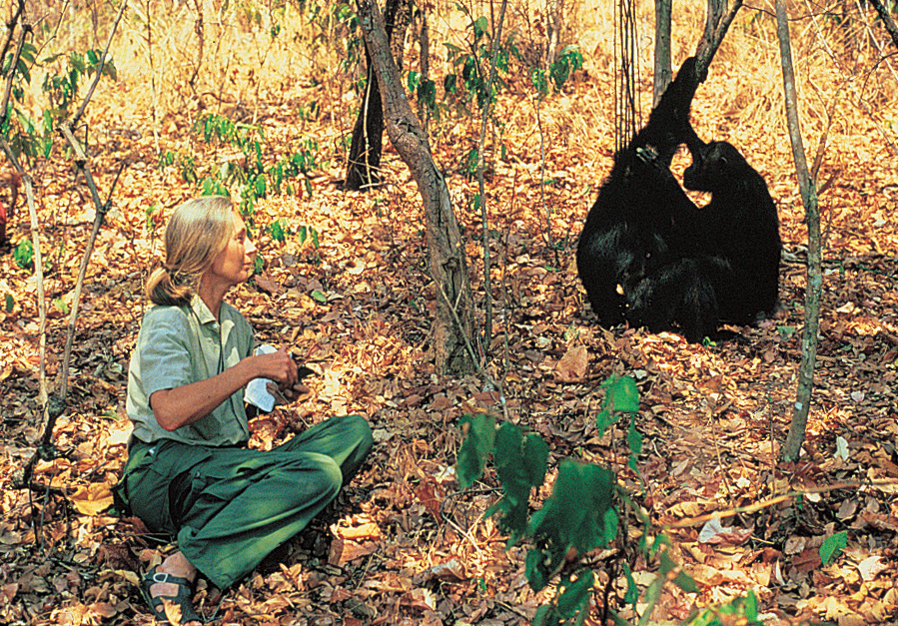
Scientists use chimpanzees in medical and psychological research because they share many physical and social characteristics with human beings. For example, the genetic makeups of humans and chimpanzees are, on average, about 96 percent identical. In addition, many scientists believe that HIV-1, one of the viruses that causes AIDS, developed from a virus found in chimpanzees called simian immunodeficiency virus (SIV).
Psychologists use chimpanzees to study such behavior as communication, learning, and problem solving. See Learning (Insight learning) . In one experiment, chimpanzees were shown an object and then given two objects to touch. The chimpanzees learned to identify by touch the object that was identical to the one they had seen. Scientists once believed that only human beings had this ability.
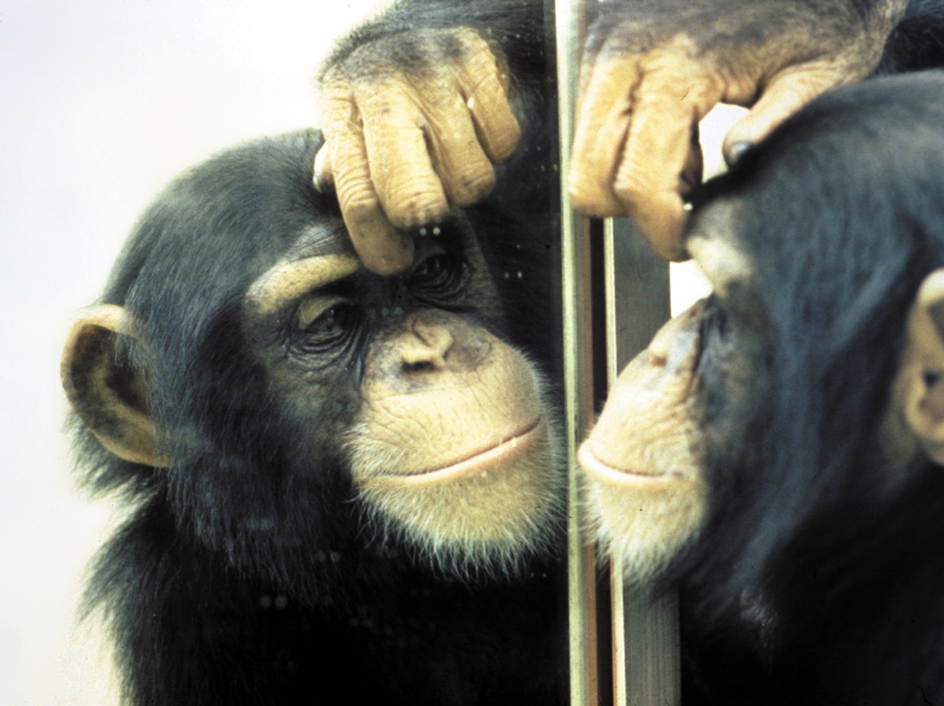
During the 1970’s and 1980’s, many chimpanzees were taught sign language. At the Yerkes National Primate Research Center in Atlanta, a chimpanzee named Lana learned to use symbols on a computer keyboard to ask for food, companionship, and music. Such studies suggest that chimpanzees may use symbols in the same way that people use words to represent objects, individuals, and emotions.
See also Yerkes, Robert Mearns .
